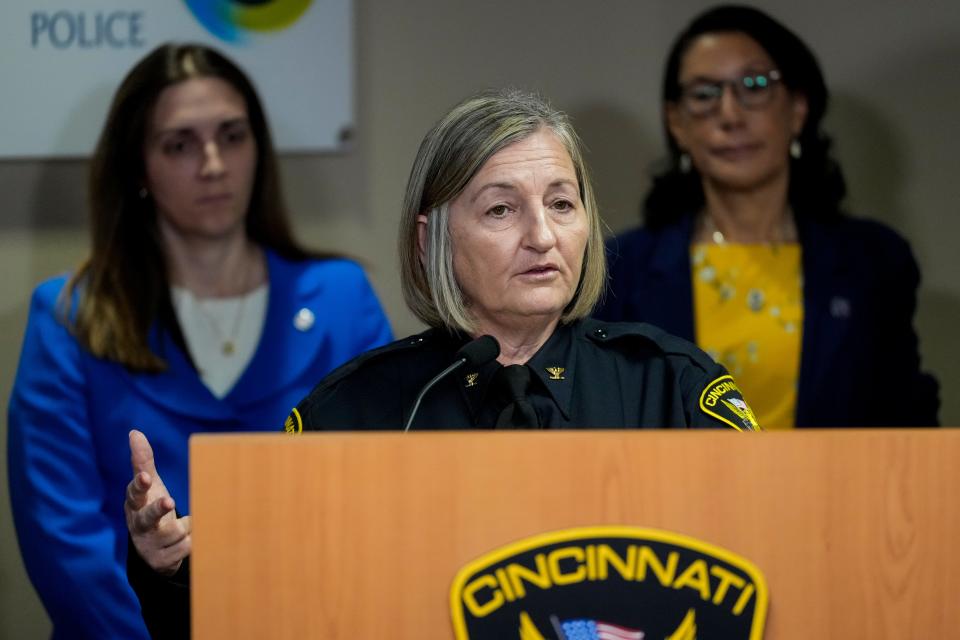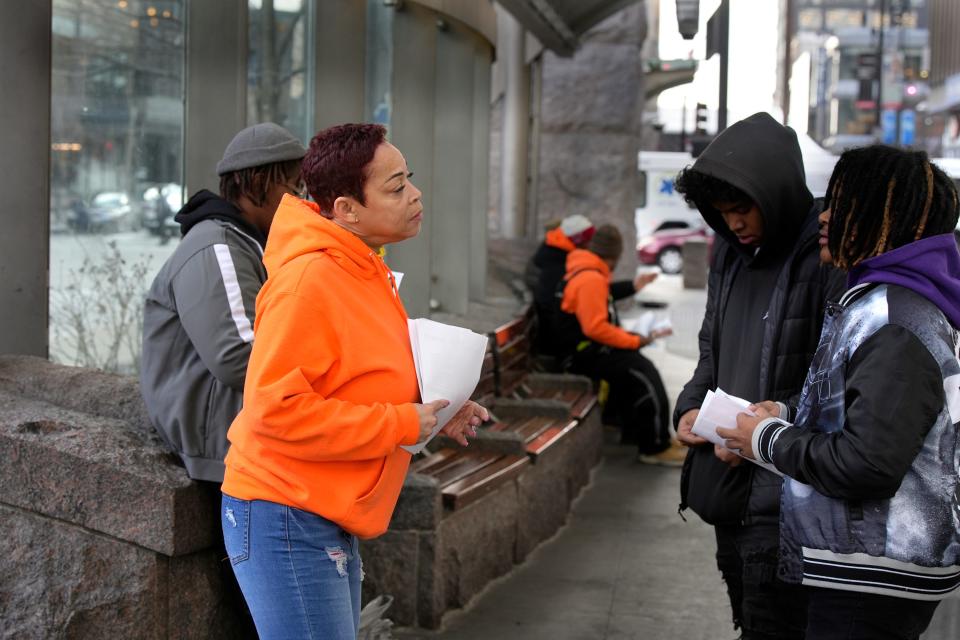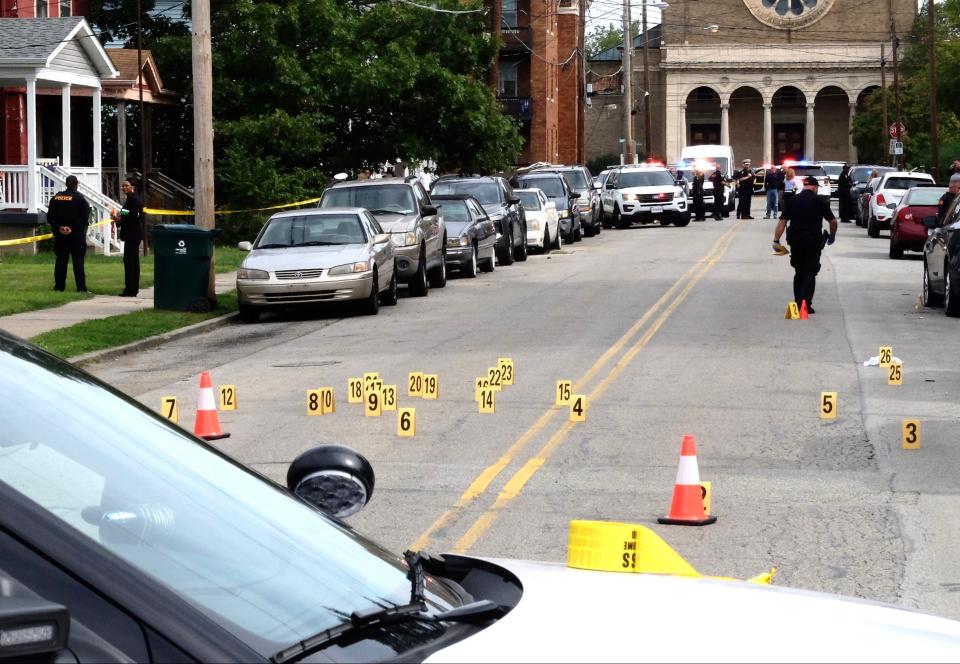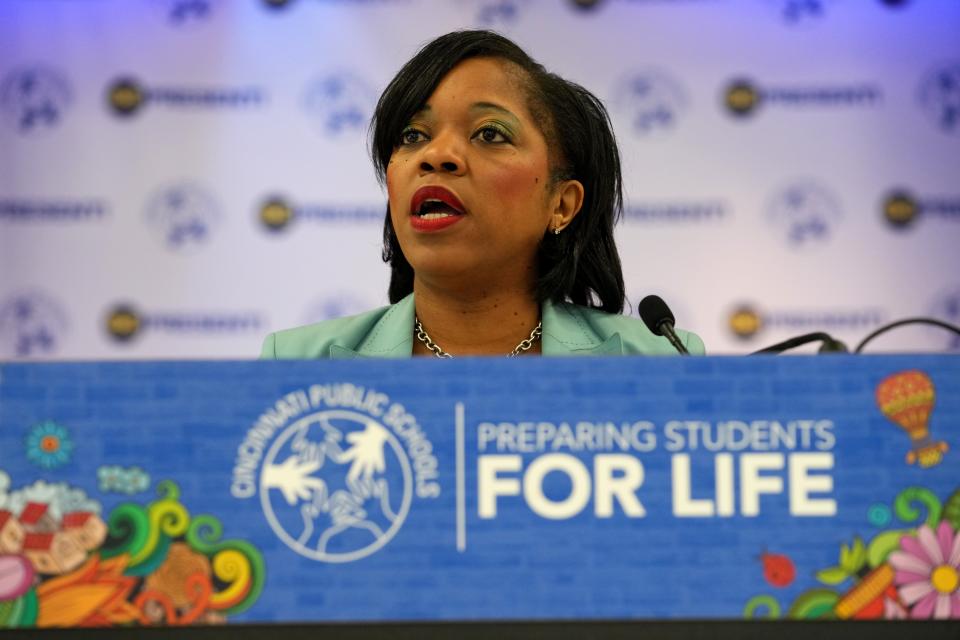A Q&A with Cincinnati Public Schools Superintendent Iranetta Wright about youth violence
Last year was a record year for teen shootings. In January, there were multiple attacks involving teens Downtown. In response, Cincinnati Public Schools Superintendent Iranetta Wright sat down with The Enquirer to discuss youth violence.
In the wake of the Downtown attacks, Police Chief Teresa Theetge called a meeting of leaders from across the city. District officials attended that meeting. Theetge said the city could not police its way out of this problem and pledged to work with people across the community to find solutions.
Both Wright and Theetge have said their organizations cannot solve the problem alone. While it remains unclear if any one organization in Cincinnati can lead the charge, the schools and police are working with transit officials and others. Volunteers from several other organizations have swarmed Downtown for weeks to engage with kids there.

And, at least so far, there have been fewer teens shot this year. By March 20 last year, 13 teens between the ages of 13 and 17 had been shot and three of those had died. This year, six teens have been shot and one has died.
Here's what Wright said about the district's role in confronting youth violence. Her comments have been edited for length.
What has the district done after meeting with city leaders and police about youth violence?
We identified all the students who were in the Government Square area in January so that school principals could follow up with those students about expectations.
We sent a written reminder to families about expectations around behavior, around the use of our (bus) passes and the consequences that could go along with misuse. There could not only be consequences based on the code of conduct but also consequences like revoking your pass. Obviously, that's something we don't want to do because for many of our students, Metro is their only means to get back and forth to school, but we also want them to conduct themselves appropriately.
The other thing we're getting pretty consistently from the police department is an update on student behavior in the Downtown area. So we're doing two things with that. We're monitoring to see if those students should even be Downtown, and then also following up if there's discipline to be issued as well.

Last year, Wright made comments in her state of the schools address about youth gun violence. She said when kids "pick up a gun and shoot somebody and kill them," there's nothing her staff can do. She also said, "We really have to own what we can't own." Wright wanted to address those comments.
I was talking about our district being a restorative practices district in terms of thinking about discipline for our students. We want to do that in a restorative nature so that our children are able to learn from the mistakes that they make.
Restorative practices – for people who don't understand it – make people very uncomfortable. They think that restorative practices are devoid of actual discipline. Having a conference with a child or having a conference with the family or having a redirection with the child, they don't necessarily see that as a consequence. It may not be as punitive as sending students to an alternative program, but it still gives a way to respond to whatever the issue is.
More: Cincy schools 'can't own' gun violence outside the classroom, superintendent says
One of the things that I said as a part of that is if someone shoots someone, there's not a restorative practice that I can give you for that.
That doesn't mean I don't want students to learn from that and try to repair the harm they caused. But very quickly, when you commit a crime, it goes beyond the scope of what we can do in terms of restoration.
Collectively as a school district, we don't own the problem of gun violence. We can try to make sure that we are doing our part in terms of that. But that's a much broader issue.
Our primary responsibility is education, and so we want to make sure that we're first and foremost keeping our students safe.

What is CPS doing to keep students safe?
All of our schools have active metal detectors in the buildings. We do searches as students are coming in, this is in high schools primarily. We search backpacks. We do wanding as the students are coming in. We do cursory checks in classrooms to make certain that students don't have things that they don't need coming in school.
A next step is determining the best place to begin to talk to students about gun safety – working with our SROs to get that out to our students. There are some other community partners that do the same.
The other thing that we do is encourage children that if you see something, say something. There's been conversation about where guns have been found around the community, but we're not finding those coming through our school buildings. And when we find them, we report them.
There have been some students of CPS shot. In terms of offering assistance as a school community, we send a mental health crisis team out to the school because often we don't know what the response is going to be. We deploy a population of school social workers, of mental health professionals, to go out to the building to help students process what's occurred.
The number of students engaging in violence or directly affected by violence is a small fraction of the student population. However, research shows that trauma and adverse childhood experiences associated with violence can affect classmates and peers. How does CPS address a problem like that?
A lot of our students have experienced trauma or they are in classes with students that have experienced trauma. All of our students have access to mental health support at their school. We have several health clinics at our school buildings that are open to all of our students, but they're also open to the community as well.
We focus quite a bit on social-emotional learning. It's done in partnership with our school social workers. Every one of our schools has at least one school social worker. Many of our high schools have more than one. They do specific lessons with the students around social-emotional learning, and that begins to address some of the trauma and gives students coping skills for how to work through some of that trauma.
What can a school district do to change the culture of youth in a city?

This is what my heart believes: In a lot of instances, our children were never taught how to agree to disagree and how to disagree without being disagreeable.
I believe that one of the answers is restorative practices. I believe in helping children understand how their actions impact other people, helping them recognize that there are behaviors that are harmful. Give them strategies to help them repair that harm.
I think about some of the stories. Somebody bumps somebody else and instead of saying, “excuse me,” or “I didn't mean to do that,” it becomes something physical. We can help children recapture what it means to just coexist with other people and they can become more community-minded.
With children coming into the district having never learned those skills, do you believe schools can instill those values in those kids?
I really do. As we're talking about the numbers, I use quite a bit of the 80, 15, 5 principle – 80% of the kids are doing what you ask them to do because you're the adult and they're not right. It really doesn't matter what community they're from. Generally, 80% of the children are doing what they're asked to do.
Five percent of the children need some real support. They have some real concerns and some barriers that need to be addressed.
The challenge becomes the 15% in the middle.
The 15% can go with the 80% to get 95% of the children in the building going in the right direction. That usually looks like good structures with good systems, with good support, with quality programming, all of those things.
When you have gaps in those things, then that 15% goes with the 5%. It makes things really challenging because it's so disproportionate when you think about the resources that you have.
We really want to make sure that we're doing two things. One, we don't want to give the impression that it is all of the kids. All of the children in the community are not causing an issue.
The ones that you see are that 5%. That 5% gets really loud. That 5% is the 5% that's out and that's causing crime and doing some of those other things. So if you can determine how to reach that 5%, then you have a lot more likelihood of being able to make sure that the 15% doesn't go with the five.
This article originally appeared on Cincinnati Enquirer: CPS superintendent Iranetta Wright talks schools and youth violence

